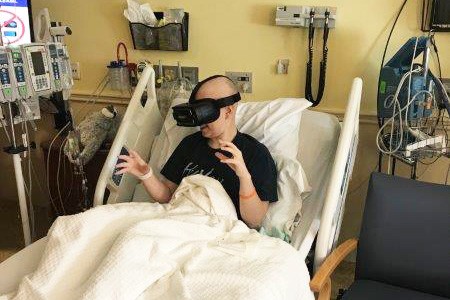Virtual reality goggles are being used to help children at Hackensack University Medical Center stay calm during painful or uncomfortable procedures.
The goggles enable a patient to play games or relax on a virtual beach, among other scenes, while getting blood drawn or undergoing a spinal tap or an IV insertion, among other unpleasant treatments.
The goggles, 10 pairs donated by a donor through the Hackensack University Medical Foundation, are used in the Children’s Cancer Institute, as well as in pediatric, inpatient and outpatient units.
“The goggles, which are a form of guided imagery, have been shown to alleviate anxiety with procedures,” says Stacey Rifkin-Zenenberg, DO, a pediatric hematologist and oncologist at the hospital. “This technology allows the patient to use many senses to distract during a procedure or a pain crisis. The technology truly supports the emotional wellness and therapeutic needs of our patients.”
Also See: Can IT help better manage chronic pain?
Hackensack was looking for innovative strategies for individuals coping with pain and learned that other hospitals were using the virtual reality goggles after having applied for grant funding, and the other hospitals showed the programs that they were making available to kids.
Implementing the use of the VR goggles wasn’t difficult—it was just a “matter of figuring out which goggles to buy and which programs, available from an array of apps, would be appropriate for allaying anxiety or controlling pain,” Rifkin-Zenenberg explains.

“The goggles help children cope with their treatment and put them in a place where they can control the game they are playing just by moving their head,” says Christopher Beggs, a child life specialist. At Hackensack, every child specialist has the goggles, he adds. “I let the children use the googles while in the waiting room before going in.”
Since integrating the goggles program into patient care, Hackensack’s Child Life team has seen success in helping patients with pain management, relaxation and anxiety reduction, notes Ellen Goldring, the section chief of Child Life at the hospital.
Ryan Shaughnessy, a patient at Hackensack, has used the googles several times during hospital stays. “It was fun and it made me feel a little better,” he says. “It really took my mind off the situation and was fun to play all the games and to learn how to use the program.”

